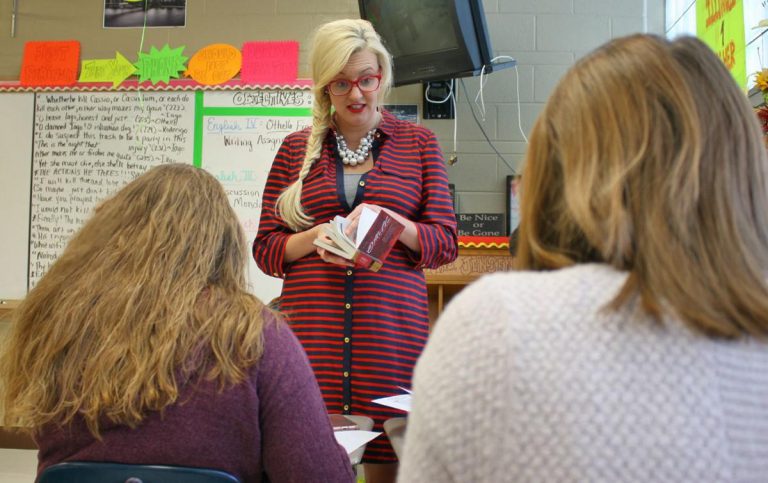About half of Gladys Marquez’s students can’t access the internet at home. Marquez teaches English language learners at Dwight Eisenhower High School in Blue Island on Chicago’s south side. The school serves predominantly students of color from low-income backgrounds.
Marquez says her students are fortunate to attend a school district that provides an iPad to each pupil. But she calls it “a blessing and a curse.” It’s a curse right now because many of her students can’t access Wi-Fi in their homes.
Illinois schools are closed to help contain the coronavirus, and so are many businesses and community resources like libraries. Marquez says that’s another problem for a lot of her students.
“A lot of my kids would go to like McDonald’s or Burger King, Dunkin Donuts to do their homework, or Starbucks, because they had access to Wi-Fi. All of which are closed right now,” she said.
On March 31, school districts across Illinois will transition to e-learning or remote learning days, per an order from the Illinois State Board of Education. The goal is to get instruction to students any way districts can until in-person classes resume. The state encourages districts to adopt grading policies that don’t harm students, specifically passing or incomplete grading models that allow students to make-up or re-do assignments.
Marquez posts daily assignments online in a Google classroom. Many of her students have only a cell phone to access that material.
“There are certain apps that function much better on their iPad than they would on their phone. There’s just so many variables you know when you think about students’ access. Is it their phone? Do they have to borrow their parent’s phone? It can be a glaring difference between the haves and the have nots,” Marquez said.
Marquez plans to create a virtual classroom using the video chat software, Zoom. But she worries about the students who won’t be able to access it. In the meantime, she’s also taken creative steps to meet her students’ needs; one student told her they left a book at school and can’t go back for it.
“I was sitting there taking pictures of all of the different pages and trying to upload them to the classroom. And you know, there’s just different things that you’re trying to do as an educator just to try to fill that void,” Marquez said.
While students remain shut out of their classrooms, their challenges with remote learning largely depend on their socioeconomic status and the resources they have at home.
Lindsey Jensen is following her school district’s e-learning plan. Jensen teaches English at Dwight Township High School, located in a small town south of Joliet. Most of the district’s students are white, and only about 30 percent are classified as low-income.
“We are to provide students with approximately 15 to 20 minutes worth of work per day in each of our classes. Whatever that looks like is kind of up to each teacher.”
Jensen says if students can’t access the internet, they can make up those assignments when school is back in session. Internet access isn’t a problem for her AP English students. Jensen says they are concerned about upcoming exams.
“My AP English kids are, rightfully so, really nervous about their upcoming AP exam.”
She plans to set up a video classroom using Zoom to get face-to-face time with her AP students.
“You know I can’t just throw test prep materials at those kids and expect them to do well on that. They all need instruction.”
Jensen says it’s impossible to replicate what goes on in the classroom online. She worries about whether her students will be ready for next year given how long they’ve been out of school.
“They are having very different experiences than what our previous students have experienced. And undoubtedly, that’s going to affect student readiness,” Jensen said.
Gladys Marquez, the teacher from Blue Island, says her biggest concerns are rooted in the present moment.
“I have students that work 40 hours a week,” Marquez said. “And they work because they need to work to eat, to survive. And I worry about them. I don’t know what’s going on with them. I don’t know if they’re well. I don’t know if they’re eating.”
How educators across the state handle this period of remote instruction and online classes depends on the resources their students have, or don’t have, at home. Marquez says the school closures serve to spotlight an opportunity gap that’s now exacerbated by the coronavirus pandemic.

